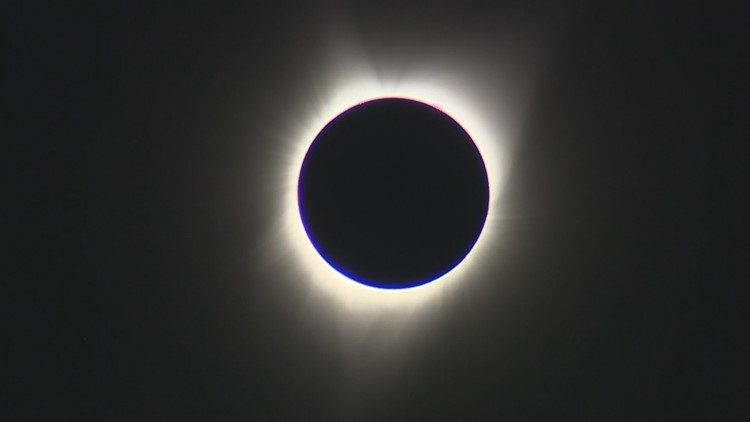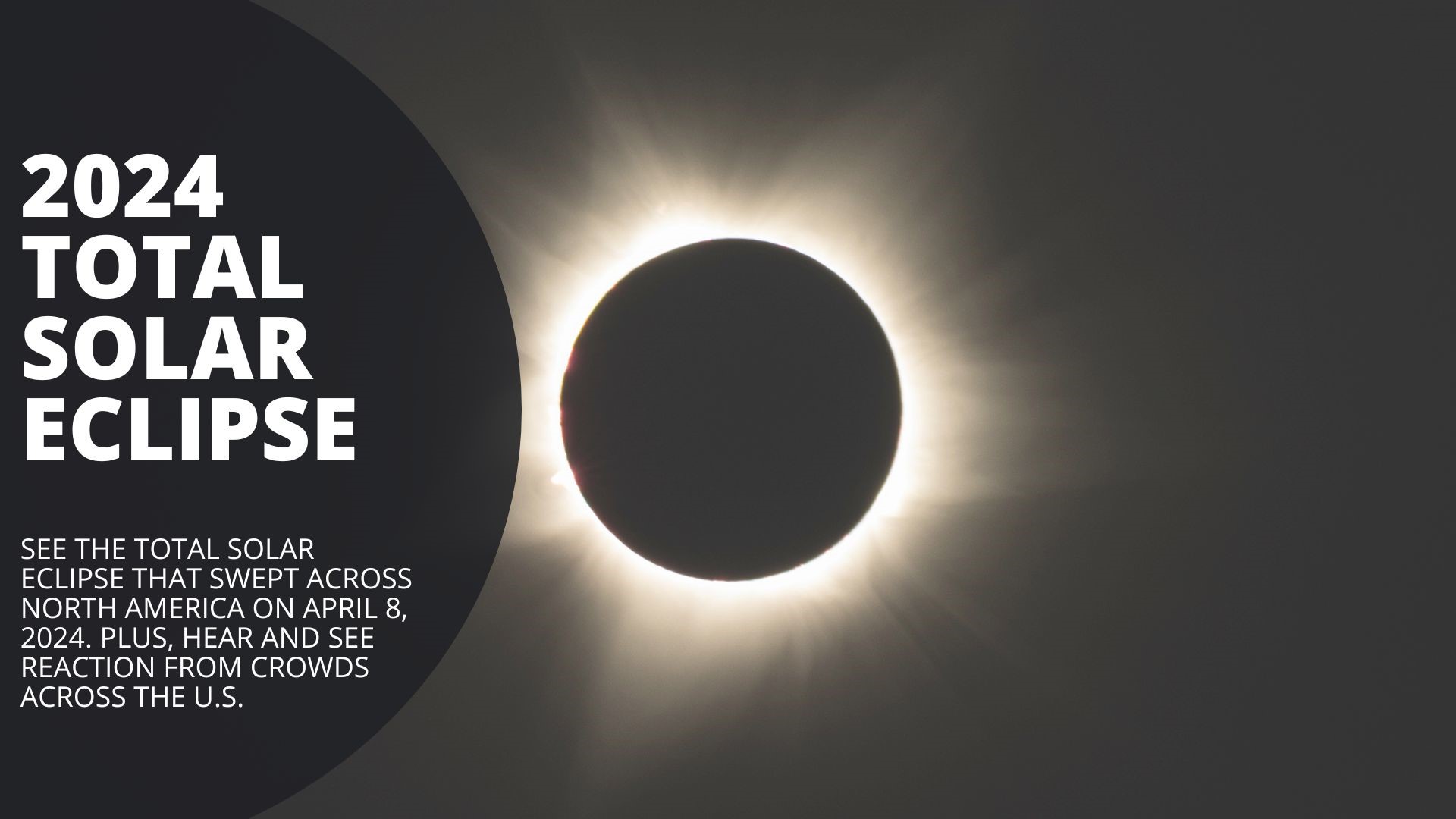PORTLAND, Ore. — Much anticipation has been building for the upcoming total solar eclipse on April 8. While Oregon is not in the path of totality, the eclipse will be partially visible. How much you can expect to see depends on where you live in the state and Monday's forecast.
A total solar eclipse happens when the moon passes between the sun and the earth, blocking the face of the sun. When that happens, the sky will completely darken for a few minutes as though it were dusk or dawn, according to NASA. Depending on the weather, people in the path of totality may be able to see the sun's corona, or outer atmosphere, which is normally obscured by the sun's brightness.
Unfortunately, KGW meteorologist Rod Hill said much of western Washington and Oregon will miss out on the limited visibility of the solar eclipse due to a cloudy forecast Monday, though he said people in eastern Oregon will have a better chance of seeing it.
Partial solar eclipse time for Portland begins at 10:33 a.m. Monday and ends at 12:19 p.m. The peak of coverage with about 23% of the sun blocked by the moon will be at 11:25 a.m., Hill said.
The further you are away from the path of totality, the less the sun will appear "swallowed" by the moon.
Here's how much of the eclipse you can expect to see if you live in the following cities, weather permitting, according to TimeandDate.com:
- Portland: 22.25%
- Salem: 22.51%
- Bend: 26.22%
- Eugene: 23.60%
- Medford: 26.32%
- Astoria: 19.85%
In Vancouver, Washington, 22.10% of the eclipse will be visible.
Interactive map below. Search your city by typing it in the search bar, or hover around the map to see data for cities around the country. Mobile users, tap here for map.
The eclipse will move over the U.S., first entering into Texas with totality beginning at 11:40 a.m. PDT. The next one that will be visible in U.S., spanning coast to coast, will be on Aug. 23, 2044.



